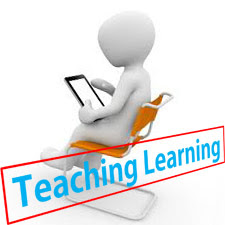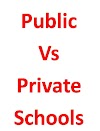Introduction to Vocabulary
Language is build up with vocabulary items and
grammatical systems. Vocabulary is genuine aspect of language without which a
language cannot exist in the world among the human beings. Each language
consists of vocabulary items which are the major building blocks to communicate
to each other. The more vocabulary items
we have, the more communication is possible. In the lack of vocabularies
communication is impossible. It can be defined as the total numbers of words,
which make up language. In this respect:
Richards
et al. (1995 p.307) says vocabulary refers to, "A set of lexemes including
single word, compound word and idioms."
Learning
a foreign language is a subject matter of as learning the vocabulary of that
language. In this regard, Wallace (1982, p.9) says, " It has after been
remarked how strange it is that comparatively little has been written on the
teaching and learning of foreign language vocabulary because there is a sense
in which learning a foreign language is basically matter of learning the
vocabulary of that language".
Vocabulary plays an important role in expressing complex thoughts, ideas
and emotions. Words constitute the elements of language structures and a proper
knowledge. This is essential for one and all. Without having larger number of vocabularies, people feel frustrated when they do not find the appropriate
words while speaking the target language.
Crystal
(2008) says, "Vocabulary is the Everest of a language." So, which techniques
of teaching and learning of vocabularies are the questions on the criteria of
selection and need of the learner, should be properly considered.
Even though vocabulary is the genuine part of
language, it is relatively neglected area or it is taught that learning a
foreign language is automatically learning vocabulary items. It is essential to deal with vocabulary items
separately to advance vocabulary repertoire so that the person can command over
that language. To Harmer (2008), vocabulary is essential because the language
structures make up provide the vital organ and flesh. Language use is almost
impossible if an ability to manipulate grammatical structure and pattern do not
have any potential for expressing meaning unless words are used.
Chomsky
(2057) argues that "due to the finite number of grammatical rules a child
is capable of producing infinite number of structure." These rules are
pre-programmed in the child's mind but this principle is not applied in the
case of vocabulary since word may be used differently in different situation.
Wilkins
(2001) says, "Without grammar very little can be conveyed, without
vocabulary nothing can be conveyed".
Hornby
(2000, p.147) defines vocabulary in different ways as that all words that
first, a person knows or uses under it, two categories are found-active and
passive vocabulary. Second, all the words in a particular language. Third the
words that people use when they are talking. Fourth, list of words with their
meanings from above definitions, we can say that vocabulary is the list of words
used in particular language.
Word Meaning
Most
words have more than one meaning. So that we can not decipher the meaning of words in isolation. It needs the context in which it is used. For example, the
word 'run' means noun (e.g. the batsman made 15 runs). But it has more than
dozen meanings when we combine it with different preposition as a phrasal verb;
such as 'run away'. We decipher the meaning of a word by looking at the context
in which it is used and by looking its combination with other words. For
example the word 'Bank' refers to "The place where people keep money"
in one sense and it has another entirely different meaning as "the coastal
area of river". If we see a man signing in cheque and says, "I am
going to the bank," the word 'bank' refers to the 'financial institution'
but if a fish man on a boat says, "I am going to the bank", it assets
to the coastal area of river.
Thus,
while teaching the word 'bank' the teacher should teach how the word 'bank' is
used to give different meaning in different context.
Next
significant aspect of word meaning is sense relation. Sense relation refers to
the various ways in which the meanings of words may be related. The
relationship might be a sameness or similarity of meaning in which case it is
called synonyms or it might be opposite meaning in which case it is antonyms.
Likewise, Yule (1985, p.118) says, "Words are not only the meaning
containers and role players but their relationship". There are various
such relationship. The sense relationship incorporates the following features:
Source (Yule 1985, p.118)
Synonymy
This is the relationship of
sameness of meaning i.e. two words having same meaning or nearly the same e.g.
good, nice, smart may serve as synonyms of 'intellect'. Theoretically, synonyms
are similar but infrequently they convey same meaning even between words that
seem interchangeable, such as good and nice, one will be preferred over the
other in certain context and by particular speakers. Thus, the word having
similar meaning may be inappropriate in different context i.e. handsome refers
to the fitness in boys but does not take the function of pretty, cute,
beautiful.
Antonym
It refers to the relationship
of oppositeness of meaning i.e. two words or lexemes having opposite meaning
e.g. short and tall, heavy and light, big and small, rich and poor etc. Antonymy
is often thought of as opposite of synonymy, but the status of the two are very
different. Languages have no real synonyms and it is doubtful whether any true
synonyms exist. But antonym is a regular and very natural feature of language
and can be defined fairly and precisely. Antonyms can be divided in two types:
gradable and non-gradable. Gradable antonym is seen in terms of degree of
quality involved. In other words, gradable pair does not necessarily imply the
order.
Non-gradable antonyms are
also called complementary which refers to the relation between words or lexemes
e.g. male and female, dead and alive, etc, whose meaning are mutually
exclusive; true of one implies falsity of there.
Thus, hyponymy refers the
relationship which finds between specific items and general lexical items. In
other words, the former is included in the latter for example a dog is a
hyponymy of animal. Chair is hyponymy of furniture.
Prototypes
It means the first design of
something from, which other form are derived. Yule (1985, P.120) defined
prototype as the useful elements to explain meaning not interms of component
features but interms of resemblance to the clearest example. The sparrow and
the pigeon are the closer prototype than eagle and ostrich to make a clear
concept of bird. A sparrow would be a prototype, of bird whereas an ostrich
would not because of its typical characteristics, notably its inability to fly.
If the vocabulary teaching is performed with prototype, the students get chance
to activate their passive vocabulary as well as the new vocabulary items can
also be introduced to them in interesting way.
Homonymy
This refers to lexical items
which have the same form but differ in meaning. Homonymy is illustrated from
the various meaning of bear (animal, carry) or ear (of body, of corn) we have
seen how 'like' and 'like' can be two quite different words. I like looking
flower, look like new. While hyponyms provide a headache for the learner, their
ambiguity, is a rich source of human. Thus, the teacher should teach different
homonyms while teaching vocabulary items.
Homophony
Homophony is a type of
homonymy. Homophones are words which have the same pronunciation but different
written periods and meanings. For instance, threw-thorough, rode-rowed,
bare-bear, sew-so, some-sum, meet-meet, etc.
It refers to the multiple
meaning of a single word such as 'foot' which means bottom of the leg' bottom
of the mountain' etc. According to Crystal, it refers to a lexical item which
has a range of different meaning. The multiple meaning of a polygenic words are
not entirely different, they are in some way connected to the word. Thus,
although the polysemous nature of vocabulary provides complete heed ache for
learners. It equally becomes useful if a teacher teaches them different shades
of meaning of a word in an interesting way.
Metonymy
It refers to a figure of speech in which the
name of an attribute of an entity is used in place of the entity itself. This
is the different' type of relationship between words based on a close
connection in every days' experience.
References
Aarts,
F. and Aarts, J. (1986). English
syntactic structures. Oxford: Pergamon press.
Best,
J. W. and Kahn, J. V. (2004). Research in
education. New Dilhi: Prentice Hall.
Brown,
H. D. (1994). Principles of language
learning and teaching. UK: Prentice Hall.
Cameron,
L. (2001). Teaching language to young
learners. UK: Cambridge University Press.
Celce-
Murcia, M. and Larsen Freeman, D. (1999). The
grammar book: An ESL/EFL teacher's course. London: Newbury House.
Harmer,
J. (2008). The practice of English
language teaching. London: Longman.
Richards,
J. et al. Dictionary of applied linguistics, 1985, Great Britain:
Longman.
Ur.
P. 1996. A Course in Language Teaching Practice and Theory. Cambridge:
CUP.
Wallace,
M.J. 1982. Teaching Vocabulary, ELBS.
Yule,
G. 1985. The study of language. Cambridge: CUP.











0 Comments